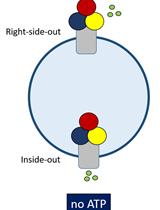- EN - English
- CN - 中文
Candida albicans Mitochondrial Protein Import Assay
白念珠菌线粒体蛋白的转运实验
发布: 2013年02月20日第3卷第4期 DOI: 10.21769/BioProtoc.331 浏览次数: 10441
Abstract
We have established the use of Candida albicans as a new model system to study mitochondrial biogenesis. This dimorphic yeast provides an excellent system to investigate the coordination of mitochondrial biogenesis with other cellular networks including cellular metabolism and the cell cycle. Unlike the model lab yeast Saccharomyces cerevisiae, C. albicans is not subject to the Crabtree effect and hence grows aerobically in glucose when oxygen is present. Therefore the control of mitochondrial biogenesis in C. albicans is more typical of eukaryotic cells. C. albicans has a fully sequenced genome and there are many published tools for genetic manipulation facilitating Systems Biology approaches. The isolation of mitochondria (as described in the protocol: Preparation of Mitochondria from Candida albicans) (Hewitt et al., 2013) produces a more simplified system that can be interrogated using the standard tools of molecular biology. In addition, the import of radiolabelled proteins described in this protocol is a sensitive technique that can be used to determine details of kinetics and interactions of imported proteins.
Keywords: Mitochondria (线粒体)Materials and Reagents
- Rabbit Reticulocyte Lysate System, Nuclease Treated (Promega Corporation, catalog number: L4960 )
- 35S labeled cysteine and methionine (PerkinElmer, catalog number: 072007MC )
- SUPERase-In (Life Technologies, Ambion®, catalog number: AM2696 )
- Mitochondria
- Sorbitol
- Valinomycin
- Oligomycin
- Antimycin
- Soybean Trypsin Inhibitor (SBTI) (Sigma-Aldrich)
- Amino acids
- Coomassie Brilliant Blue G250
- Digitonin (Calbiochem, catalog number: CAS 11024-24-1 )
- RNA for in vitro translation (see Recipes)
- Import buffer (IB) (see Recipes)
- Blue native lysis buffer (see Recipes)
- 10x BN (Blue Native) loading dye (see Recipes)
- RNA (see Recipes)
- ATP (see Recipes)
- NADH (see Recipes)
- AVO (see Recipes)
- Proteinase K (PK) (see Recipes)
- Apyrase (see Recipes)
- Phenylmethanesulfonylfluoride (PMSF) (see Recipes)
- Trypsin (see Recipes)
Equipment
- Water bath with temperature control
- Centrifuge
- Filter – 0.45 μm Acrodisc syringe filter (Pall Life Sciences)
Procedure
文章信息
版权信息
© 2013 The Authors; exclusive licensee Bio-protocol LLC.
如何引用
Hewitt, V. L., Lithgow, T. and Traven, A. (2013). Candida albicans Mitochondrial Protein Import Assay. Bio-protocol 3(4): e331. DOI: 10.21769/BioProtoc.331.
分类
细胞生物学 > 基于细胞的分析方法 > 转运
您对这篇实验方法有问题吗?
在此处发布您的问题,我们将邀请本文作者来回答。同时,我们会将您的问题发布到Bio-protocol Exchange,以便寻求社区成员的帮助。
Share
Bluesky
X
Copy link












